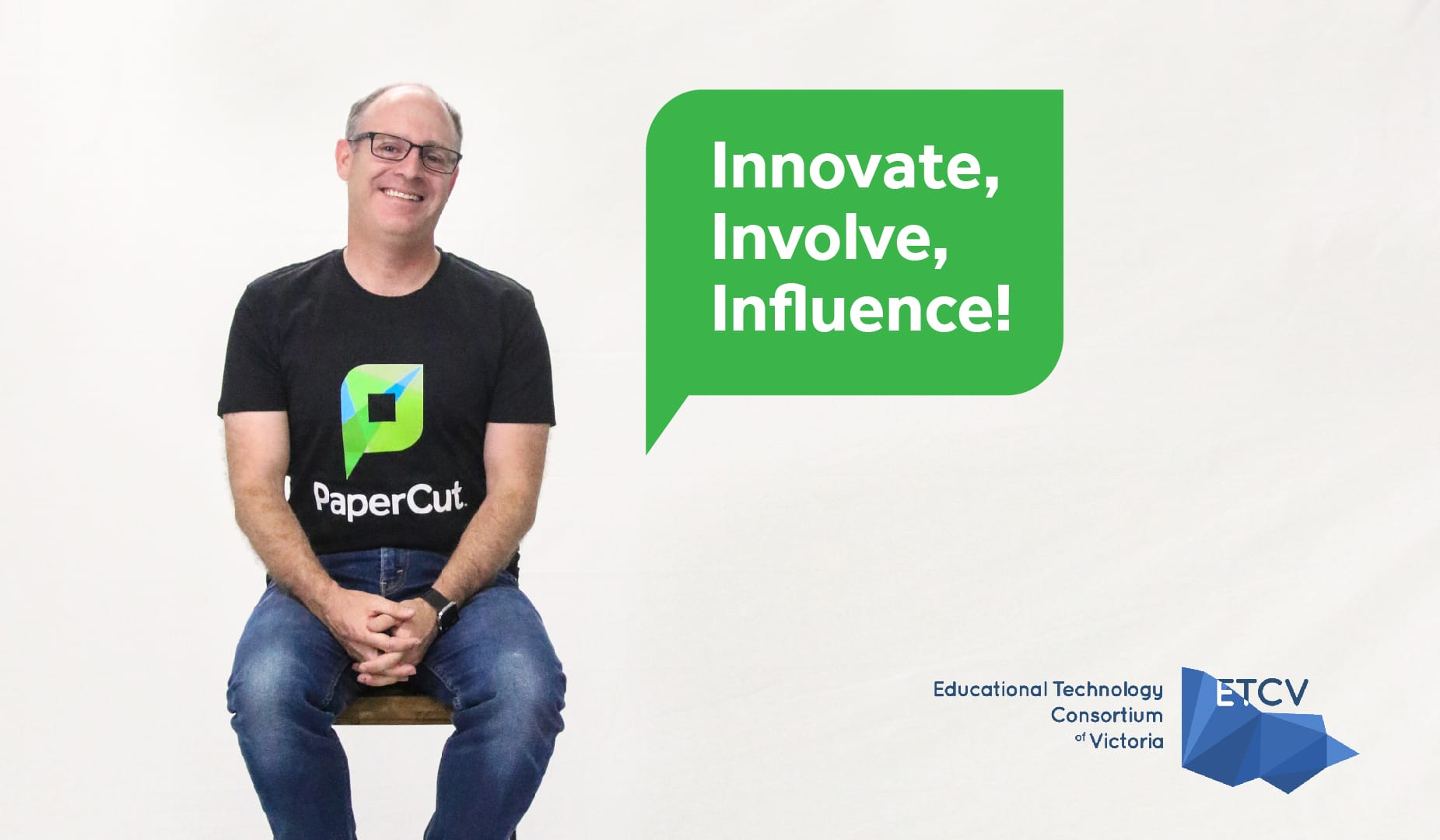Recently, I had the honor of speaking at the meetup for the Educational Technology Consortium of Victoria (ETCV) – a body dedicated to promoting better learning and teaching through technology.
I touched on everything from my humble (and long-ago) IT beginnings, to the pride I feel today in delivering a complete printing experience for Google organizations as a Google Premier Partner.
But above all, I wanted to talk about how Australians can put the “I” back in IT through Innovating, Involving, and Influencing for the future.
--
Before starting PaperCut, I worked part-time as a network administrator at my then high school.
I did the usual things handled by network admins: cleaning the fluff off mouse roller balls, setting up Active Directories (NT Domains in those days) – all the fun stuff.
Naturally, I also had a fair bit to do with the printers; and day in, day out, I’d see overflowing paper bins and uncollected printouts in every print room.
I remember thinking to myself, ‘I could write a script to at least manage printing better than we are now’ – and that’s basically how PaperCut began.
I was the new kid on the block with an idea I was reasonably passionate about, and I acted on it – but I wasn’t special then, and I’m not special today.
Everyone in IT has the power to be heard, act, and empower others to do the same. It’s exactly why the following three directives are on my mind – and why I’m here to get them on yours, too.
1. We need to Innovate
As IT professionals in the academic world, we are role models, and we do set the tone for future generations.
After PaperCut launched, we had a lot of system administrators call up – not just asking how to do things, but suggesting what we and our software should be doing.
We were shaped by hungry and ambitious IT workers in our country who craved innovation.
More recently – and on a different scale altogether – Google launched secure LDAP, a game-changing database syncing feature.
And we, a comparatively tiny software company in Australia, developed a direct relationship with them to impact how that feature turned out.
Innovation doesn’t have to mean going out and starting your own company, or becoming a big player in the industry. It can simply be recognising a need, and speaking up about it.
It’s the relationships you have with your vendors – the shared passions and interests – that matter. Being proactive about these things fosters innovation, and inspires others to follow that lead.
2. We need to Involve
As a segment, IT and computing has a diversity problem. Gender equality still isn’t there, and opportunities across cultural backgrounds and countries are simply uneven.
Technology is a leveller, but harnessing that quality requires perseverance and generational cycles of change.
Half of our customers are in the education sector, and the other half in the corporate and enterprise sector.
Schools think about affecting change generationally through behavior and policy. But businesses often think in quarterly sales targets, or annual budgeting cycles. It can be a tough thing to reconcile.
One way PaperCut involves is by opening our doors to high school students. As you might guess, three quarters of them don’t want to be there, and the rest do, but only to skip class work.
It always starts out the same way: “I really don’t see myself as a coder”, or “I’m not a geek.” None of them want to be in software.
But as they walk around the building, they realize we have a whole team of graphic designers; a team dedicated to culture; a team responsible for enriching customer relationships.
And at the end of the tour, they’re not just converted – they’re excited. They can see themselves working in software. And that’s why we need to champion involvement at every stage.
3. We need to Influence
Beyond PaperCut, I’m fortunate enough to contribute to Swinburne’s Computer Science and Software Engineering course advisory board.
I remember meeting with a group of engineers one time, and asking: “Who’s had to use computing in their day-to-day?” Be it through data modelling or simple analysis, every hand in the room went up.
But when I followed up with, “Who’s had to use partial differentiation equations?”, they all laughed and kept their hands unmoved in their laps.
To provide context, partial differentiation equations is one of those quintessential first-year maths subjects that everyone does, but never actually uses out in the field.
It’s a telling example of the radical shift we’ve experienced: computing isn’t an elective anymore; it’s a core competence.
One of the board’s main frustrations is with subjects like Programming 101, where the curriculum is kept basic for the purpose of starting everyone out on equal footing.
It shouldn’t be that way. Students should be coming into university with more computing knowledge, and the ability to jump straight into career-applicable and industry-relevant subjects.
It’s on us to influence educational bodies to make those changes.
--
Thanks for your time. I hope you feel motivated to put the “I” back in IT, and help realize the promising future our industry deserves.


